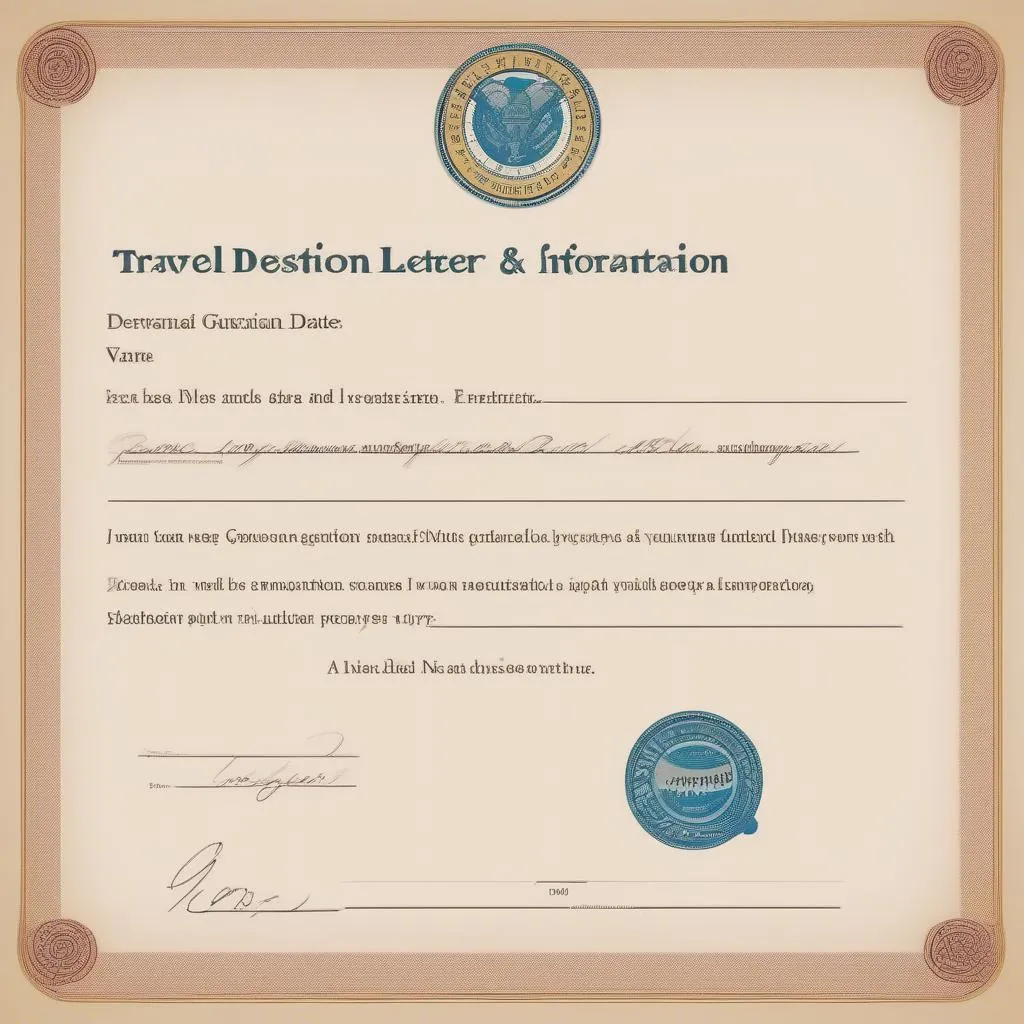Imagine this: you’re a teenager, finally old enough to embark on an exciting adventure with your friends. You’re picturing the sun-drenched beaches of Bali, the bustling night markets of Bangkok, or maybe even a historical tour through Rome. But wait! You need a parent authorization letter for travel, or your dream trip might be over before it begins.
A parental consent letter for travel might seem like a mere formality, but it’s a crucial document that can save you from a world of trouble, especially when traveling internationally or with only one parent. This article will guide you on how to craft a comprehensive letter that satisfies authorities and grants you the freedom to explore the world.
Understanding the Importance of a Parent Authorization Letter for Travel
A parent authorization letter, also known as a child travel consent letter, is a legal document that grants permission for a minor to travel without their parent or legal guardian. It’s particularly important when:
- Traveling internationally: Many countries require a parental consent letter to ensure the child is not being abducted or taken against their will.
- Traveling with only one parent: A letter from the non-traveling parent prevents any misunderstandings or legal issues regarding custody.
- Traveling with a group: If your child is traveling with a school group, sports team, or another organized tour, a parental consent letter for travel is often mandatory.
Failing to provide a travel consent letter for a child can lead to significant delays, denied entry at the border, and even the heartbreaking scenario of being separated from your travel group.
 parent-authorization
parent-authorization
Crafting the Perfect Parent Authorization Letter for Travel: A Step-by-Step Guide
While the specific requirements for a parental consent letter for travel may vary by country, here’s a comprehensive guide to include all the necessary information:
1. Heading and Salutation:
- Begin with “To Whom It May Concern” or address the specific embassy or consulate if known.
2. Introduction:
- State your name and relationship to the child.
- Clearly state your consent for your child to travel.
Example: “This letter is to confirm my consent for my child, [Child’s Full Name], to travel to [Destination] from [Departure Date] to [Return Date].”
3. Child’s Information:
- Provide the child’s full name (as it appears on their passport).
- Include their date of birth, passport number, and any relevant visa information.
4. Trip Details:
- Mention the purpose of the trip (e.g., vacation, school trip, family visit).
- Include the destination country (or countries) and the travel dates.
- Specify the accompanying adult’s details (if applicable), including their name, address, and relationship to the child.
5. Contact Information:
- Provide your complete contact information, including your address, phone number, and email address.
- Include an emergency contact person’s information in case you are unreachable.
6. Legal Guardian Information (if applicable):
- If someone other than a parent is the child’s legal guardian, their information must be included, along with relevant legal documentation.
7. Notarization:
- While not always mandatory, having the letter notarized adds an extra layer of legality and authenticity.
 notarization-travel-letter
notarization-travel-letter
8. Closing:
- End the letter with “Sincerely” or “Yours faithfully.”
- Sign your full name.